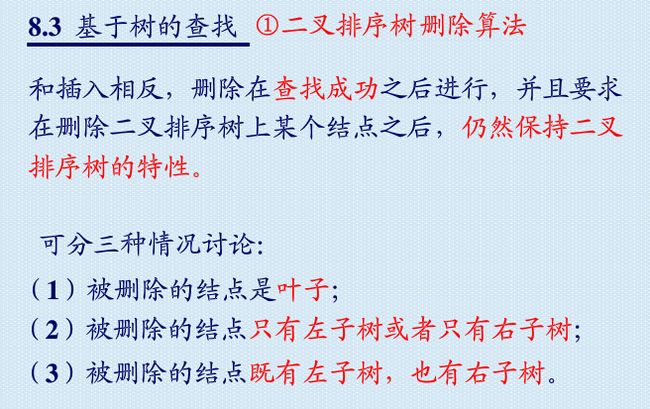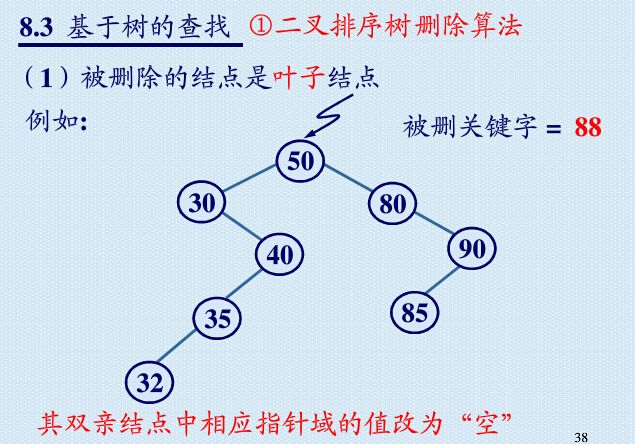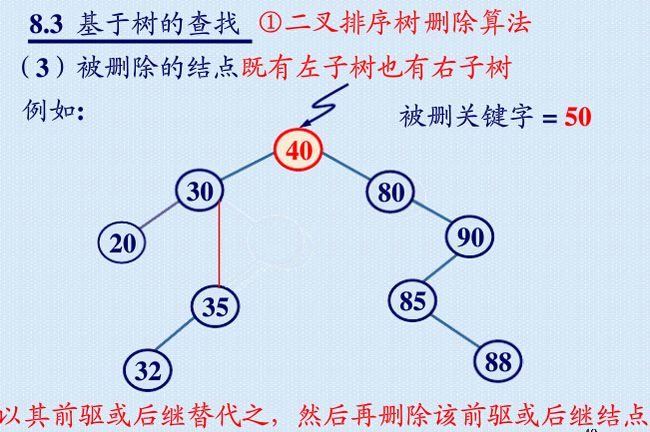第十四周 项目5 平衡二叉树 包括二叉树的删除和插入
//头文件
#ifndef GRAPH_H_INCLUDED
#define GRAPH_H_INCLUDED
#define MAXV 100 //最大顶点个数
#define INF 32767 //INF表示∞
typedef int InfoType;
//以下定义邻接矩阵类型
typedef struct
{
int no; //顶点编号
InfoType info; //顶点其他信息,在此存放带权图权值
} VertexType; //顶点类型
typedef struct //图的定义
{
int edges[MAXV][MAXV]; //邻接矩阵
int n,e; //顶点数,弧数
VertexType vexs[MAXV]; //存放顶点信息
} MGraph; //图的邻接矩阵类型
//以下定义邻接表类型
typedef struct ANode //弧的结点结构类型
{
int adjvex; //该弧的终点位置
struct ANode *nextarc; //指向下一条弧的指针
InfoType info; //该弧的相关信息,这里用于存放权值
} ArcNode;
typedef int Vertex;
typedef struct Vnode //邻接表头结点的类型
{
Vertex data; //顶点信息
int count; //存放顶点入度,只在拓扑排序中用
ArcNode *firstarc; //指向第一条弧
} VNode;
typedef VNode AdjList[MAXV]; //AdjList是邻接表类型
typedef struct
{
AdjList adjlist; //邻接表
int n,e; //图中顶点数n和边数e
} ALGraph; //图的邻接表类型
//功能:由一个反映图中顶点邻接关系的二维数组,构造出用邻接矩阵存储的图
//参数:Arr - 数组名,由于形式参数为二维数组时必须给出每行的元素个数,在此将参数Arr声明为一维数组名(指向int的指针)
// n - 矩阵的阶数
// g - 要构造出来的邻接矩阵数据结构
void ArrayToMat(int *Arr, int n, MGraph &g); //用普通数组构造图的邻接矩阵
void ArrayToList(int *Arr, int n, ALGraph *&); //用普通数组构造图的邻接表
void MatToList(MGraph g,ALGraph *&G);//将邻接矩阵g转换成邻接表G
void ListToMat(ALGraph *G,MGraph &g);//将邻接表G转换成邻接矩阵g
void DispMat(MGraph g);//输出邻接矩阵g
void DispAdj(ALGraph *G);//输出邻接表G
#endif // GRAPH_H_INCLUDED
#include <stdio.h>
#include <malloc.h>
//功能:由一个反映图中顶点邻接关系的二维数组,构造出用邻接矩阵存储的图
//参数:Arr - 数组名,由于形式参数为二维数组时必须给出每行的元素个数,在此将参数Arr声明为一维数组名(指向int的指针)
// n - 矩阵的阶数
// g - 要构造出来的邻接矩阵数据结构
void ArrayToMat(int *Arr, int n, MGraph &g)
{
int i,j,count=0; //count用于统计边数,即矩阵中非0元素个数
g.n=n;
for (i=0; i<g.n; i++)
for (j=0; j<g.n; j++)
{
g.edges[i][j]=Arr[i*n+j]; //将Arr看作n×n的二维数组,Arr[i*n+j]即是Arr[i][j],计算存储位置的功夫在此应用
if(g.edges[i][j]!=0 && g.edges[i][j]!=INF)
count++;
}
g.e=count;
}
void ArrayToList(int *Arr, int n, ALGraph *&G)
{
int i,j,count=0; //count用于统计边数,即矩阵中非0元素个数
ArcNode *p;
G=(ALGraph *)malloc(sizeof(ALGraph));
G->n=n;
for (i=0; i<n; i++) //给邻接表中所有头节点的指针域置初值
G->adjlist[i].firstarc=NULL;
for (i=0; i<n; i++) //检查邻接矩阵中每个元素
for (j=n-1; j>=0; j--)
if (Arr[i*n+j]!=0) //存在一条边,将Arr看作n×n的二维数组,Arr[i*n+j]即是Arr[i][j]
{
p=(ArcNode *)malloc(sizeof(ArcNode)); //创建一个节点*p
p->adjvex=j;
p->info=Arr[i*n+j];
p->nextarc=G->adjlist[i].firstarc; //采用头插法插入*p
G->adjlist[i].firstarc=p;
}
G->e=count;
}
void MatToList(MGraph g, ALGraph *&G)
//将邻接矩阵g转换成邻接表G
{
int i,j;
ArcNode *p;
G=(ALGraph *)malloc(sizeof(ALGraph));
for (i=0; i<g.n; i++) //给邻接表中所有头节点的指针域置初值
G->adjlist[i].firstarc=NULL;
for (i=0; i<g.n; i++) //检查邻接矩阵中每个元素
for (j=g.n-1; j>=0; j--)
if (g.edges[i][j]!=0) //存在一条边
{
p=(ArcNode *)malloc(sizeof(ArcNode)); //创建一个节点*p
p->adjvex=j;
p->info=g.edges[i][j];
p->nextarc=G->adjlist[i].firstarc; //采用头插法插入*p
G->adjlist[i].firstarc=p;
}
G->n=g.n;
G->e=g.e;
}
void ListToMat(ALGraph *G,MGraph &g)
//将邻接表G转换成邻接矩阵g
{
int i,j;
ArcNode *p;
g.n=G->n; //根据一楼同学“举报”改的。g.n未赋值,下面的初始化不起作用
g.e=G->e;
for (i=0; i<g.n; i++) //先初始化邻接矩阵
for (j=0; j<g.n; j++)
g.edges[i][j]=0;
for (i=0; i<G->n; i++) //根据邻接表,为邻接矩阵赋值
{
p=G->adjlist[i].firstarc;
while (p!=NULL)
{
g.edges[i][p->adjvex]=p->info;
p=p->nextarc;
}
}
}
void DispMat(MGraph g)
//输出邻接矩阵g
{
int i,j;
for (i=0; i<g.n; i++)
{
for (j=0; j<g.n; j++)
if (g.edges[i][j]==INF)
printf("%3s","∞");
else
printf("%3d",g.edges[i][j]);
printf("\n");
}
}
void DispAdj(ALGraph *G)
//输出邻接表G
{
int i;
ArcNode *p;
for (i=0; i<G->n; i++)
{
p=G->adjlist[i].firstarc;
printf("%3d: ",i);
while (p!=NULL)
{
printf("-->%d/%d ",p->adjvex,p->info);
p=p->nextarc;
}
printf("\n");
}
}
#include <stdio.h>
#include <malloc.h>
typedef int KeyType; //定义关键字类型
typedef struct node //记录类型
{
KeyType key; //关键字项
int bf; //平衡因子
InfoType data; //其他数据域
struct node *lchild,*rchild; //左右孩子指针
} BSTNode;
void LeftProcess(BSTNode *&p,int &taller)
//对以指针p所指结点为根的二叉树作左平衡旋转处理,本算法结束时,指针p指向新的根结点
{
BSTNode *p1,*p2;
if (p->bf==0) //原本左、右子树等高,现因左子树增高而使树增高
{
p->bf=1;
taller=1;
}
else if (p->bf==-1) //原本右子树比左子树高,现左、右子树等高
{
p->bf=0;
taller=0;
}
else //原本左子树比右子树高,需作左子树的平衡处理
{
p1=p->lchild; //p指向*p的左子树根结点
if (p1->bf==1) //新结点插入在*b的左孩子的左子树上,要作LL调整
{
p->lchild=p1->rchild;
p1->rchild=p;
p->bf=p1->bf=0;
p=p1;
}
else if (p1->bf==-1) //新结点插入在*b的左孩子的右子树上,要作LR调整
{
p2=p1->rchild;
p1->rchild=p2->lchild;
p2->lchild=p1;
p->lchild=p2->rchild;
p2->rchild=p;
if (p2->bf==0) //新结点插在*p2处作为叶子结点的情况
p->bf=p1->bf=0;
else if (p2->bf==1) //新结点插在*p2的左子树上的情况
{
p1->bf=0;
p->bf=-1;
}
else //新结点插在*p2的右子树上的情况
{
p1->bf=1;
p->bf=0;
}
p=p2;
p->bf=0; //仍将p指向新的根结点,并置其bf值为0
}
taller=0;
}
}
void RightProcess(BSTNode *&p,int &taller)
//对以指针p所指结点为根的二叉树作右平衡旋转处理,本算法结束时,指针p指向新的根结点
{
BSTNode *p1,*p2;
if (p->bf==0) //原本左、右子树等高,现因右子树增高而使树增高
{
p->bf=-1;
taller=1;
}
else if (p->bf==1) //原本左子树比右子树高,现左、右子树等高
{
p->bf=0;
taller=0;
}
else //原本右子树比左子树高,需作右子树的平衡处理
{
p1=p->rchild; //p指向*p的右子树根结点
if (p1->bf==-1) //新结点插入在*b的右孩子的右子树上,要作RR调整
{
p->rchild=p1->lchild;
p1->lchild=p;
p->bf=p1->bf=0;
p=p1;
}
else if (p1->bf==1) //新结点插入在*p的右孩子的左子树上,要作RL调整
{
p2=p1->lchild;
p1->lchild=p2->rchild;
p2->rchild=p1;
p->rchild=p2->lchild;
p2->lchild=p;
if (p2->bf==0) //新结点插在*p2处作为叶子结点的情况
p->bf=p1->bf=0;
else if (p2->bf==-1) //新结点插在*p2的右子树上的情况
{
p1->bf=0;
p->bf=1;
}
else //新结点插在*p2的左子树上的情况
{
p1->bf=-1;
p->bf=0;
}
p=p2;
p->bf=0; //仍将p指向新的根结点,并置其bf值为0
}
taller=0;
}
}
int InsertAVL(BSTNode *&b,KeyType e,int &taller)
/*若在平衡的二叉排序树b中不存在和e有相同关键字的结点,则插入一个
数据元素为e的新结点,并返回1,否则返回0。若因插入而使二叉排序树
失去平衡,则作平衡旋转处理,布尔变量taller反映b长高与否*/
{
if(b==NULL) //原为空树,插入新结点,树“长高”,置taller为1
{
b=(BSTNode *)malloc(sizeof(BSTNode));
b->key=e;
b->lchild=b->rchild=NULL;
b->bf=0;
taller=1;
}
else
{
if (e==b->key) //树中已存在和e有相同关键字的结点则不再插入
{
taller=0;
return 0;
}
if (e<b->key) //应继续在*b的左子树中进行搜索
{
if ((InsertAVL(b->lchild,e,taller))==0) //未插入
return 0;
if (taller==1) //已插入到*b的左子树中且左子树“长高”
LeftProcess(b,taller);
}
else //应继续在*b的右子树中进行搜索
{
if ((InsertAVL(b->rchild,e,taller))==0) //未插入
return 0;
if (taller==1) //已插入到b的右子树且右子树“长高”
RightProcess(b,taller);
}
}
return 1;
}
void DispBSTree(BSTNode *b) //以括号表示法输出AVL
{
if (b!=NULL)
{
printf("%d",b->key);
if (b->lchild!=NULL || b->rchild!=NULL)
{
printf("(");
DispBSTree(b->lchild);
if (b->rchild!=NULL) printf(",");
DispBSTree(b->rchild);
printf(")");
}
}
}
void LeftProcess1(BSTNode *&p,int &taller) //在删除结点时进行左处理
{
BSTNode *p1,*p2;
if (p->bf==1)
{
p->bf=0;
taller=1;
}
else if (p->bf==0)
{
p->bf=-1;
taller=0;
}
else //p->bf=-1
{
p1=p->rchild;
if (p1->bf==0) //需作RR调整
{
p->rchild=p1->lchild;
p1->lchild=p;
p1->bf=1;
p->bf=-1;
p=p1;
taller=0;
}
else if (p1->bf==-1) //需作RR调整
{
p->rchild=p1->lchild;
p1->lchild=p;
p->bf=p1->bf=0;
p=p1;
taller=1;
}
else //需作RL调整
{
p2=p1->lchild;
p1->lchild=p2->rchild;
p2->rchild=p1;
p->rchild=p2->lchild;
p2->lchild=p;
if (p2->bf==0)
{
p->bf=0;
p1->bf=0;
}
else if (p2->bf==-1)
{
p->bf=1;
p1->bf=0;
}
else
{
p->bf=0;
p1->bf=-1;
}
p2->bf=0;
p=p2;
taller=1;
}
}
}
void RightProcess1(BSTNode *&p,int &taller) //在删除结点时进行右处理
{
BSTNode *p1,*p2;
if (p->bf==-1)
{
p->bf=0;
taller=-1;
}
else if (p->bf==0)
{
p->bf=1;
taller=0;
}
else //p->bf=1
{
p1=p->lchild;
if (p1->bf==0) //需作LL调整
{
p->lchild=p1->rchild;
p1->rchild=p;
p1->bf=-1;
p->bf=1;
p=p1;
taller=0;
}
else if (p1->bf==1) //需作LL调整
{
p->lchild=p1->rchild;
p1->rchild=p;
p->bf=p1->bf=0;
p=p1;
taller=1;
}
else //需作LR调整
{
p2=p1->rchild;
p1->rchild=p2->lchild;
p2->lchild=p1;
p->lchild=p2->rchild;
p2->rchild=p;
if (p2->bf==0)
{
p->bf=0;
p1->bf=0;
}
else if (p2->bf==1)
{
p->bf=-1;
p1->bf=0;
}
else
{
p->bf=0;
p1->bf=1;
}
p2->bf=0;
p=p2;
taller=1;
}
}
}
void Delete2(BSTNode *q,BSTNode *&r,int &taller)
//由DeleteAVL()调用,用于处理被删结点左右子树均不空的情况
{
if (r->rchild==NULL)
{
q->key=r->key;
q=r;
r=r->lchild;
free(q);
taller=1;
}
else
{
Delete2(q,r->rchild,taller);
if (taller==1)
RightProcess1(r,taller);
}
}
int DeleteAVL(BSTNode *&p,KeyType x,int &taller) //在AVL树p中删除关键字为x的结点
{
int k;
BSTNode *q;
if (p==NULL)
return 0;
else if (x<p->key)
{
k=DeleteAVL(p->lchild,x,taller);
if (taller==1)
LeftProcess1(p,taller);
return k;
}
else if (x>p->key)
{
k=DeleteAVL(p->rchild,x,taller);
if (taller==1)
RightProcess1(p,taller);
return k;
}
else //找到了关键字为x的结点,由p指向它
{
q=p;
if (p->rchild==NULL) //被删结点右子树为空
{
p=p->lchild;
free(q);
taller=1;
}
else if (p->lchild==NULL) //被删结点左子树为空
{
p=p->rchild;
free(q);
taller=1;
}
else //被删结点左右子树均不空
{
Delete2(q,q->lchild,taller);
if (taller==1)
LeftProcess1(q,taller);
p=q;
}
return 1;
}
}
int main()
{
BSTNode *b=NULL;
int i,j,k;
KeyType a[]= {16,3,7,11,9,26,18,14,15},n=9; //例10.5
printf(" 创建一棵AVL树:\n");
for(i=0; i<n; i++)
{
printf(" 第%d步,插入%d元素:",i+1,a[i]);
InsertAVL(b,a[i],j);
DispBSTree(b);
printf("\n");
}
printf(" AVL:");
DispBSTree(b);
printf("\n");
printf(" 删除结点:\n"); //例10.6
k=11;
printf(" 删除结点%d:",k);
DeleteAVL(b,k,j);
printf(" AVL:");
DispBSTree(b);
printf("\n");
k=9;
printf(" 删除结点%d:",k);
DeleteAVL(b,k,j);
printf(" AVL:");
DispBSTree(b);
printf("\n");
k=15;
printf(" 删除结点%d:",k);
DeleteAVL(b,k,j);
printf(" AVL:");
DispBSTree(b);
printf("\n\n");
return 0;
}
//源文件
#ifndef GRAPH_H_INCLUDED
#define GRAPH_H_INCLUDED
#define MAXV 100 //最大顶点个数
#define INF 32767 //INF表示∞
typedef int InfoType;
//以下定义邻接矩阵类型
typedef struct
{
int no; //顶点编号
InfoType info; //顶点其他信息,在此存放带权图权值
} VertexType; //顶点类型
typedef struct //图的定义
{
int edges[MAXV][MAXV]; //邻接矩阵
int n,e; //顶点数,弧数
VertexType vexs[MAXV]; //存放顶点信息
} MGraph; //图的邻接矩阵类型
//以下定义邻接表类型
typedef struct ANode //弧的结点结构类型
{
int adjvex; //该弧的终点位置
struct ANode *nextarc; //指向下一条弧的指针
InfoType info; //该弧的相关信息,这里用于存放权值
} ArcNode;
typedef int Vertex;
typedef struct Vnode //邻接表头结点的类型
{
Vertex data; //顶点信息
int count; //存放顶点入度,只在拓扑排序中用
ArcNode *firstarc; //指向第一条弧
} VNode;
typedef VNode AdjList[MAXV]; //AdjList是邻接表类型
typedef struct
{
AdjList adjlist; //邻接表
int n,e; //图中顶点数n和边数e
} ALGraph; //图的邻接表类型
//功能:由一个反映图中顶点邻接关系的二维数组,构造出用邻接矩阵存储的图
//参数:Arr - 数组名,由于形式参数为二维数组时必须给出每行的元素个数,在此将参数Arr声明为一维数组名(指向int的指针)
// n - 矩阵的阶数
// g - 要构造出来的邻接矩阵数据结构
void ArrayToMat(int *Arr, int n, MGraph &g); //用普通数组构造图的邻接矩阵
void ArrayToList(int *Arr, int n, ALGraph *&); //用普通数组构造图的邻接表
void MatToList(MGraph g,ALGraph *&G);//将邻接矩阵g转换成邻接表G
void ListToMat(ALGraph *G,MGraph &g);//将邻接表G转换成邻接矩阵g
void DispMat(MGraph g);//输出邻接矩阵g
void DispAdj(ALGraph *G);//输出邻接表G
#endif // GRAPH_H_INCLUDED
#include <stdio.h>
#include <malloc.h>
//功能:由一个反映图中顶点邻接关系的二维数组,构造出用邻接矩阵存储的图
//参数:Arr - 数组名,由于形式参数为二维数组时必须给出每行的元素个数,在此将参数Arr声明为一维数组名(指向int的指针)
// n - 矩阵的阶数
// g - 要构造出来的邻接矩阵数据结构
void ArrayToMat(int *Arr, int n, MGraph &g)
{
int i,j,count=0; //count用于统计边数,即矩阵中非0元素个数
g.n=n;
for (i=0; i<g.n; i++)
for (j=0; j<g.n; j++)
{
g.edges[i][j]=Arr[i*n+j]; //将Arr看作n×n的二维数组,Arr[i*n+j]即是Arr[i][j],计算存储位置的功夫在此应用
if(g.edges[i][j]!=0 && g.edges[i][j]!=INF)
count++;
}
g.e=count;
}
void ArrayToList(int *Arr, int n, ALGraph *&G)
{
int i,j,count=0; //count用于统计边数,即矩阵中非0元素个数
ArcNode *p;
G=(ALGraph *)malloc(sizeof(ALGraph));
G->n=n;
for (i=0; i<n; i++) //给邻接表中所有头节点的指针域置初值
G->adjlist[i].firstarc=NULL;
for (i=0; i<n; i++) //检查邻接矩阵中每个元素
for (j=n-1; j>=0; j--)
if (Arr[i*n+j]!=0) //存在一条边,将Arr看作n×n的二维数组,Arr[i*n+j]即是Arr[i][j]
{
p=(ArcNode *)malloc(sizeof(ArcNode)); //创建一个节点*p
p->adjvex=j;
p->info=Arr[i*n+j];
p->nextarc=G->adjlist[i].firstarc; //采用头插法插入*p
G->adjlist[i].firstarc=p;
}
G->e=count;
}
void MatToList(MGraph g, ALGraph *&G)
//将邻接矩阵g转换成邻接表G
{
int i,j;
ArcNode *p;
G=(ALGraph *)malloc(sizeof(ALGraph));
for (i=0; i<g.n; i++) //给邻接表中所有头节点的指针域置初值
G->adjlist[i].firstarc=NULL;
for (i=0; i<g.n; i++) //检查邻接矩阵中每个元素
for (j=g.n-1; j>=0; j--)
if (g.edges[i][j]!=0) //存在一条边
{
p=(ArcNode *)malloc(sizeof(ArcNode)); //创建一个节点*p
p->adjvex=j;
p->info=g.edges[i][j];
p->nextarc=G->adjlist[i].firstarc; //采用头插法插入*p
G->adjlist[i].firstarc=p;
}
G->n=g.n;
G->e=g.e;
}
void ListToMat(ALGraph *G,MGraph &g)
//将邻接表G转换成邻接矩阵g
{
int i,j;
ArcNode *p;
g.n=G->n; //根据一楼同学“举报”改的。g.n未赋值,下面的初始化不起作用
g.e=G->e;
for (i=0; i<g.n; i++) //先初始化邻接矩阵
for (j=0; j<g.n; j++)
g.edges[i][j]=0;
for (i=0; i<G->n; i++) //根据邻接表,为邻接矩阵赋值
{
p=G->adjlist[i].firstarc;
while (p!=NULL)
{
g.edges[i][p->adjvex]=p->info;
p=p->nextarc;
}
}
}
void DispMat(MGraph g)
//输出邻接矩阵g
{
int i,j;
for (i=0; i<g.n; i++)
{
for (j=0; j<g.n; j++)
if (g.edges[i][j]==INF)
printf("%3s","∞");
else
printf("%3d",g.edges[i][j]);
printf("\n");
}
}
void DispAdj(ALGraph *G)
//输出邻接表G
{
int i;
ArcNode *p;
for (i=0; i<G->n; i++)
{
p=G->adjlist[i].firstarc;
printf("%3d: ",i);
while (p!=NULL)
{
printf("-->%d/%d ",p->adjvex,p->info);
p=p->nextarc;
}
printf("\n");
}
}
#include <stdio.h>
#include <malloc.h>
typedef int KeyType; //定义关键字类型
typedef struct node //记录类型
{
KeyType key; //关键字项
int bf; //平衡因子
InfoType data; //其他数据域
struct node *lchild,*rchild; //左右孩子指针
} BSTNode;
void LeftProcess(BSTNode *&p,int &taller)
//对以指针p所指结点为根的二叉树作左平衡旋转处理,本算法结束时,指针p指向新的根结点
{
BSTNode *p1,*p2;
if (p->bf==0) //原本左、右子树等高,现因左子树增高而使树增高
{
p->bf=1;
taller=1;
}
else if (p->bf==-1) //原本右子树比左子树高,现左、右子树等高
{
p->bf=0;
taller=0;
}
else //原本左子树比右子树高,需作左子树的平衡处理
{
p1=p->lchild; //p指向*p的左子树根结点
if (p1->bf==1) //新结点插入在*b的左孩子的左子树上,要作LL调整
{
p->lchild=p1->rchild;
p1->rchild=p;
p->bf=p1->bf=0;
p=p1;
}
else if (p1->bf==-1) //新结点插入在*b的左孩子的右子树上,要作LR调整
{
p2=p1->rchild;
p1->rchild=p2->lchild;
p2->lchild=p1;
p->lchild=p2->rchild;
p2->rchild=p;
if (p2->bf==0) //新结点插在*p2处作为叶子结点的情况
p->bf=p1->bf=0;
else if (p2->bf==1) //新结点插在*p2的左子树上的情况
{
p1->bf=0;
p->bf=-1;
}
else //新结点插在*p2的右子树上的情况
{
p1->bf=1;
p->bf=0;
}
p=p2;
p->bf=0; //仍将p指向新的根结点,并置其bf值为0
}
taller=0;
}
}
void RightProcess(BSTNode *&p,int &taller)
//对以指针p所指结点为根的二叉树作右平衡旋转处理,本算法结束时,指针p指向新的根结点
{
BSTNode *p1,*p2;
if (p->bf==0) //原本左、右子树等高,现因右子树增高而使树增高
{
p->bf=-1;
taller=1;
}
else if (p->bf==1) //原本左子树比右子树高,现左、右子树等高
{
p->bf=0;
taller=0;
}
else //原本右子树比左子树高,需作右子树的平衡处理
{
p1=p->rchild; //p指向*p的右子树根结点
if (p1->bf==-1) //新结点插入在*b的右孩子的右子树上,要作RR调整
{
p->rchild=p1->lchild;
p1->lchild=p;
p->bf=p1->bf=0;
p=p1;
}
else if (p1->bf==1) //新结点插入在*p的右孩子的左子树上,要作RL调整
{
p2=p1->lchild;
p1->lchild=p2->rchild;
p2->rchild=p1;
p->rchild=p2->lchild;
p2->lchild=p;
if (p2->bf==0) //新结点插在*p2处作为叶子结点的情况
p->bf=p1->bf=0;
else if (p2->bf==-1) //新结点插在*p2的右子树上的情况
{
p1->bf=0;
p->bf=1;
}
else //新结点插在*p2的左子树上的情况
{
p1->bf=-1;
p->bf=0;
}
p=p2;
p->bf=0; //仍将p指向新的根结点,并置其bf值为0
}
taller=0;
}
}
int InsertAVL(BSTNode *&b,KeyType e,int &taller)
/*若在平衡的二叉排序树b中不存在和e有相同关键字的结点,则插入一个
数据元素为e的新结点,并返回1,否则返回0。若因插入而使二叉排序树
失去平衡,则作平衡旋转处理,布尔变量taller反映b长高与否*/
{
if(b==NULL) //原为空树,插入新结点,树“长高”,置taller为1
{
b=(BSTNode *)malloc(sizeof(BSTNode));
b->key=e;
b->lchild=b->rchild=NULL;
b->bf=0;
taller=1;
}
else
{
if (e==b->key) //树中已存在和e有相同关键字的结点则不再插入
{
taller=0;
return 0;
}
if (e<b->key) //应继续在*b的左子树中进行搜索
{
if ((InsertAVL(b->lchild,e,taller))==0) //未插入
return 0;
if (taller==1) //已插入到*b的左子树中且左子树“长高”
LeftProcess(b,taller);
}
else //应继续在*b的右子树中进行搜索
{
if ((InsertAVL(b->rchild,e,taller))==0) //未插入
return 0;
if (taller==1) //已插入到b的右子树且右子树“长高”
RightProcess(b,taller);
}
}
return 1;
}
void DispBSTree(BSTNode *b) //以括号表示法输出AVL
{
if (b!=NULL)
{
printf("%d",b->key);
if (b->lchild!=NULL || b->rchild!=NULL)
{
printf("(");
DispBSTree(b->lchild);
if (b->rchild!=NULL) printf(",");
DispBSTree(b->rchild);
printf(")");
}
}
}
void LeftProcess1(BSTNode *&p,int &taller) //在删除结点时进行左处理
{
BSTNode *p1,*p2;
if (p->bf==1)
{
p->bf=0;
taller=1;
}
else if (p->bf==0)
{
p->bf=-1;
taller=0;
}
else //p->bf=-1
{
p1=p->rchild;
if (p1->bf==0) //需作RR调整
{
p->rchild=p1->lchild;
p1->lchild=p;
p1->bf=1;
p->bf=-1;
p=p1;
taller=0;
}
else if (p1->bf==-1) //需作RR调整
{
p->rchild=p1->lchild;
p1->lchild=p;
p->bf=p1->bf=0;
p=p1;
taller=1;
}
else //需作RL调整
{
p2=p1->lchild;
p1->lchild=p2->rchild;
p2->rchild=p1;
p->rchild=p2->lchild;
p2->lchild=p;
if (p2->bf==0)
{
p->bf=0;
p1->bf=0;
}
else if (p2->bf==-1)
{
p->bf=1;
p1->bf=0;
}
else
{
p->bf=0;
p1->bf=-1;
}
p2->bf=0;
p=p2;
taller=1;
}
}
}
void RightProcess1(BSTNode *&p,int &taller) //在删除结点时进行右处理
{
BSTNode *p1,*p2;
if (p->bf==-1)
{
p->bf=0;
taller=-1;
}
else if (p->bf==0)
{
p->bf=1;
taller=0;
}
else //p->bf=1
{
p1=p->lchild;
if (p1->bf==0) //需作LL调整
{
p->lchild=p1->rchild;
p1->rchild=p;
p1->bf=-1;
p->bf=1;
p=p1;
taller=0;
}
else if (p1->bf==1) //需作LL调整
{
p->lchild=p1->rchild;
p1->rchild=p;
p->bf=p1->bf=0;
p=p1;
taller=1;
}
else //需作LR调整
{
p2=p1->rchild;
p1->rchild=p2->lchild;
p2->lchild=p1;
p->lchild=p2->rchild;
p2->rchild=p;
if (p2->bf==0)
{
p->bf=0;
p1->bf=0;
}
else if (p2->bf==1)
{
p->bf=-1;
p1->bf=0;
}
else
{
p->bf=0;
p1->bf=1;
}
p2->bf=0;
p=p2;
taller=1;
}
}
}
void Delete2(BSTNode *q,BSTNode *&r,int &taller)
//由DeleteAVL()调用,用于处理被删结点左右子树均不空的情况
{
if (r->rchild==NULL)
{
q->key=r->key;
q=r;
r=r->lchild;
free(q);
taller=1;
}
else
{
Delete2(q,r->rchild,taller);
if (taller==1)
RightProcess1(r,taller);
}
}
int DeleteAVL(BSTNode *&p,KeyType x,int &taller) //在AVL树p中删除关键字为x的结点
{
int k;
BSTNode *q;
if (p==NULL)
return 0;
else if (x<p->key)
{
k=DeleteAVL(p->lchild,x,taller);
if (taller==1)
LeftProcess1(p,taller);
return k;
}
else if (x>p->key)
{
k=DeleteAVL(p->rchild,x,taller);
if (taller==1)
RightProcess1(p,taller);
return k;
}
else //找到了关键字为x的结点,由p指向它
{
q=p;
if (p->rchild==NULL) //被删结点右子树为空
{
p=p->lchild;
free(q);
taller=1;
}
else if (p->lchild==NULL) //被删结点左子树为空
{
p=p->rchild;
free(q);
taller=1;
}
else //被删结点左右子树均不空
{
Delete2(q,q->lchild,taller);
if (taller==1)
LeftProcess1(q,taller);
p=q;
}
return 1;
}
}
int main()
{
BSTNode *b=NULL;
int i,j,k;
KeyType a[]= {16,3,7,11,9,26,18,14,15},n=9; //例10.5
printf(" 创建一棵AVL树:\n");
for(i=0; i<n; i++)
{
printf(" 第%d步,插入%d元素:",i+1,a[i]);
InsertAVL(b,a[i],j);
DispBSTree(b);
printf("\n");
}
printf(" AVL:");
DispBSTree(b);
printf("\n");
printf(" 删除结点:\n"); //例10.6
k=11;
printf(" 删除结点%d:",k);
DeleteAVL(b,k,j);
printf(" AVL:");
DispBSTree(b);
printf("\n");
k=9;
printf(" 删除结点%d:",k);
DeleteAVL(b,k,j);
printf(" AVL:");
DispBSTree(b);
printf("\n");
k=15;
printf(" 删除结点%d:",k);
DeleteAVL(b,k,j);
printf(" AVL:");
DispBSTree(b);
printf("\n\n");
return 0;
}
//主函数
#include <stdio.h>
#include <malloc.h>
typedef int KeyType; //定义关键字类型
typedef char InfoType;
typedef struct node //记录类型
{
KeyType key; //关键字项
int bf; //平衡因子
InfoType data; //其他数据域
struct node *lchild,*rchild; //左右孩子指针
} BSTNode;
void LeftProcess(BSTNode *&p,int &taller)
//对以指针p所指结点为根的二叉树作左平衡旋转处理,本算法结束时,指针p指向新的根结点
{
BSTNode *p1,*p2;
if (p->bf==0) //原本左、右子树等高,现因左子树增高而使树增高
{
p->bf=1;
taller=1;
}
else if (p->bf==-1) //原本右子树比左子树高,现左、右子树等高
{
p->bf=0;
taller=0;
}
else //原本左子树比右子树高,需作左子树的平衡处理
{
p1=p->lchild; //p指向*p的左子树根结点
if (p1->bf==1) //新结点插入在*b的左孩子的左子树上,要作LL调整
{
p->lchild=p1->rchild;
p1->rchild=p;
p->bf=p1->bf=0;
p=p1;
}
else if (p1->bf==-1) //新结点插入在*b的左孩子的右子树上,要作LR调整
{
p2=p1->rchild;
p1->rchild=p2->lchild;
p2->lchild=p1;
p->lchild=p2->rchild;
p2->rchild=p;
if (p2->bf==0) //新结点插在*p2处作为叶子结点的情况
p->bf=p1->bf=0;
else if (p2->bf==1) //新结点插在*p2的左子树上的情况
{
p1->bf=0;
p->bf=-1;
}
else //新结点插在*p2的右子树上的情况
{
p1->bf=1;
p->bf=0;
}
p=p2;
p->bf=0; //仍将p指向新的根结点,并置其bf值为0
}
taller=0;
}
}
void RightProcess(BSTNode *&p,int &taller)
//对以指针p所指结点为根的二叉树作右平衡旋转处理,本算法结束时,指针p指向新的根结点
{
BSTNode *p1,*p2;
if (p->bf==0) //原本左、右子树等高,现因右子树增高而使树增高
{
p->bf=-1;
taller=1;
}
else if (p->bf==1) //原本左子树比右子树高,现左、右子树等高
{
p->bf=0;
taller=0;
}
else //原本右子树比左子树高,需作右子树的平衡处理
{
p1=p->rchild; //p指向*p的右子树根结点
if (p1->bf==-1) //新结点插入在*b的右孩子的右子树上,要作RR调整
{
p->rchild=p1->lchild;
p1->lchild=p;
p->bf=p1->bf=0;
p=p1;
}
else if (p1->bf==1) //新结点插入在*p的右孩子的左子树上,要作RL调整
{
p2=p1->lchild;
p1->lchild=p2->rchild;
p2->rchild=p1;
p->rchild=p2->lchild;
p2->lchild=p;
if (p2->bf==0) //新结点插在*p2处作为叶子结点的情况
p->bf=p1->bf=0;
else if (p2->bf==-1) //新结点插在*p2的右子树上的情况
{
p1->bf=0;
p->bf=1;
}
else //新结点插在*p2的左子树上的情况
{
p1->bf=-1;
p->bf=0;
}
p=p2;
p->bf=0; //仍将p指向新的根结点,并置其bf值为0
}
taller=0;
}
}
int InsertAVL(BSTNode *&b,KeyType e,int &taller)
/*若在平衡的二叉排序树b中不存在和e有相同关键字的结点,则插入一个
数据元素为e的新结点,并返回1,否则返回0。若因插入而使二叉排序树
失去平衡,则作平衡旋转处理,布尔变量taller反映b长高与否*/
{
if(b==NULL) //原为空树,插入新结点,树“长高”,置taller为1
{
b=(BSTNode *)malloc(sizeof(BSTNode));
b->key=e;
b->lchild=b->rchild=NULL;
b->bf=0;
taller=1;
}
else
{
if (e==b->key) //树中已存在和e有相同关键字的结点则不再插入
{
taller=0;
return 0;
}
if (e<b->key) //应继续在*b的左子树中进行搜索
{
if ((InsertAVL(b->lchild,e,taller))==0) //未插入
return 0;
if (taller==1) //已插入到*b的左子树中且左子树“长高”
LeftProcess(b,taller);
}
else //应继续在*b的右子树中进行搜索
{
if ((InsertAVL(b->rchild,e,taller))==0) //未插入
return 0;
if (taller==1) //已插入到b的右子树且右子树“长高”
RightProcess(b,taller);
}
}
return 1;
}
void DispBSTree(BSTNode *b) //以括号表示法输出AVL
{
if (b!=NULL)
{
printf("%d",b->key);
if (b->lchild!=NULL || b->rchild!=NULL)
{
printf("(");
DispBSTree(b->lchild);
if (b->rchild!=NULL) printf(",");
DispBSTree(b->rchild);
printf(")");
}
}
}
void LeftProcess1(BSTNode *&p,int &taller) //在删除结点时进行左处理
{
BSTNode *p1,*p2;
if (p->bf==1)
{
p->bf=0;
taller=1;
}
else if (p->bf==0)
{
p->bf=-1;
taller=0;
}
else //p->bf=-1
{
p1=p->rchild;
if (p1->bf==0) //需作RR调整
{
p->rchild=p1->lchild;
p1->lchild=p;
p1->bf=1;
p->bf=-1;
p=p1;
taller=0;
}
else if (p1->bf==-1) //需作RR调整
{
p->rchild=p1->lchild;
p1->lchild=p;
p->bf=p1->bf=0;
p=p1;
taller=1;
}
else //需作RL调整
{
p2=p1->lchild;
p1->lchild=p2->rchild;
p2->rchild=p1;
p->rchild=p2->lchild;
p2->lchild=p;
if (p2->bf==0)
{
p->bf=0;
p1->bf=0;
}
else if (p2->bf==-1)
{
p->bf=1;
p1->bf=0;
}
else
{
p->bf=0;
p1->bf=-1;
}
p2->bf=0;
p=p2;
taller=1;
}
}
}
void RightProcess1(BSTNode *&p,int &taller) //在删除结点时进行右处理
{
BSTNode *p1,*p2;
if (p->bf==-1)
{
p->bf=0;
taller=-1;
}
else if (p->bf==0)
{
p->bf=1;
taller=0;
}
else //p->bf=1
{
p1=p->lchild;
if (p1->bf==0) //需作LL调整
{
p->lchild=p1->rchild;
p1->rchild=p;
p1->bf=-1;
p->bf=1;
p=p1;
taller=0;
}
else if (p1->bf==1) //需作LL调整
{
p->lchild=p1->rchild;
p1->rchild=p;
p->bf=p1->bf=0;
p=p1;
taller=1;
}
else //需作LR调整
{
p2=p1->rchild;
p1->rchild=p2->lchild;
p2->lchild=p1;
p->lchild=p2->rchild;
p2->rchild=p;
if (p2->bf==0)
{
p->bf=0;
p1->bf=0;
}
else if (p2->bf==1)
{
p->bf=-1;
p1->bf=0;
}
else
{
p->bf=0;
p1->bf=1;
}
p2->bf=0;
p=p2;
taller=1;
}
}
}
void Delete2(BSTNode *q,BSTNode *&r,int &taller)
//由DeleteAVL()调用,用于处理被删结点左右子树均不空的情况
{
if (r->rchild==NULL)
{
q->key=r->key;
q=r;
r=r->lchild;
free(q);
taller=1;
}
else
{
Delete2(q,r->rchild,taller);
if (taller==1)
RightProcess1(r,taller);
}
}
int DeleteAVL(BSTNode *&p,KeyType x,int &taller) //在AVL树p中删除关键字为x的结点
{
int k;
BSTNode *q;
if (p==NULL)
return 0;
else if (x<p->key)
{
k=DeleteAVL(p->lchild,x,taller);
if (taller==1)
LeftProcess1(p,taller);
return k;
}
else if (x>p->key)
{
k=DeleteAVL(p->rchild,x,taller);
if (taller==1)
RightProcess1(p,taller);
return k;
}
else //找到了关键字为x的结点,由p指向它
{
q=p;
if (p->rchild==NULL) //被删结点右子树为空
{
p=p->lchild;
free(q);
taller=1;
}
else if (p->lchild==NULL) //被删结点左子树为空
{
p=p->rchild;
free(q);
taller=1;
}
else //被删结点左右子树均不空
{
Delete2(q,q->lchild,taller);
if (taller==1)
LeftProcess1(q,taller);
p=q;
}
return 1;
}
}
int main()
{
BSTNode *b=NULL;
int i,j,k;
KeyType a[]= {16,3,7,11,9,26,18,14,15},n=9; //例10.5
printf(" 创建一棵AVL树:\n");
for(i=0; i<n; i++)
{
printf(" 第%d步,插入%d元素:",i+1,a[i]);
InsertAVL(b,a[i],j);
DispBSTree(b);
printf("\n");
}
printf(" AVL:");
DispBSTree(b);
printf("\n");
printf(" 删除结点:\n"); //例10.6
k=11;
printf(" 删除结点%d:",k);
DeleteAVL(b,k,j);
printf(" AVL:");
DispBSTree(b);
printf("\n");
k=9;
printf(" 删除结点%d:",k);
DeleteAVL(b,k,j);
printf(" AVL:");
DispBSTree(b);
printf("\n");
k=15;
printf(" 删除结点%d:",k);
DeleteAVL(b,k,j);
printf(" AVL:");
DispBSTree(b);
printf("\n\n");
return 0;
}
运行结果:
知识点:



